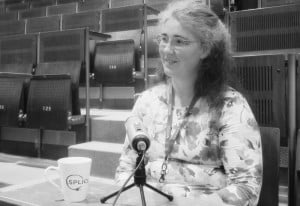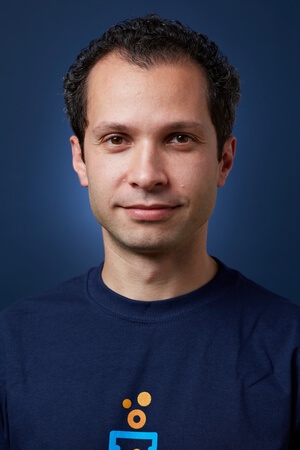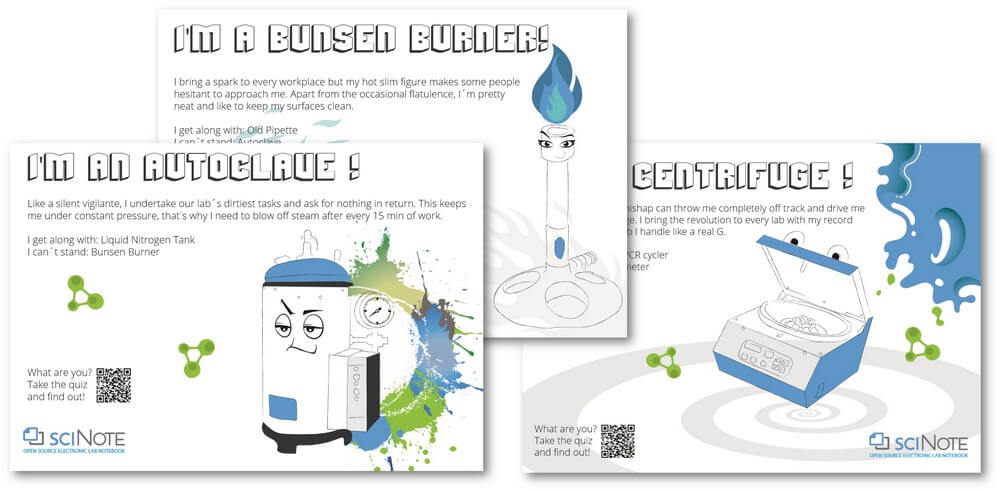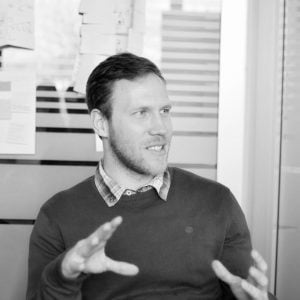Meet Jo- Ann Stanton, Senior Research Fellow, Department of Anatomy, University of Otago NZ and leader of the Freedom4 development at Ubiquitome.
"Sometimes we have no control over the opportunities that we have, but we can always control how we use them and how we put them to the best possible use."
MUKUNDH: Hi folks. Today we are in conversation with Jo-Ann Stanton of the University of Otago in Dunedin (NZ) and Ubiquitome Limited. Her team developed a portable PCR machine, the Freedom4 which has generated quite a buzz this past year. We are going to talk to her about the interesting journey to where she is now. Hi Jo-Ann!
JO-ANN: Hi. How are you doing?
MUKUNDH: Good! Good! Let us start with how your fascination with science and research began?
JO-ANN: I think I was always a child who wanted to know how things worked, some kids just ask lots of questions, and I used to make a nuisance of myself asking questions. But my real inspiration to become a scientist was a chemistry teacher I had, who actually set a challenge for us as a class: Who is going to be a scientist? I suddenly realized “Actually, I am!” That is how I got started. I was always interested in biology, so I ended up going onto a molecular biology course, got a PhD and here I am now.
MUKUNDH: One of the things for me personally, when I was doing my PhD, was that there was the “high” of the PhD, but after that came, there was a sort of emptiness. “Ok, I‘ve gotten to where I’ve wanted to be for the last three years: where do I go from here?” Could you share your experience and thought process in that time?
JO-ANN: I like to tell my students that that is actually a quite exciting part of their life, because you’ve come through your undergraduate degree and most people go straight on to do their PhD and then they get to the end of their PhD. They’ve achieved a project and it’s a great sense of satisfaction and accomplishment but then you get into that next phase and the question can be “ok, what do I do next?” Sometimes you can get a post doc that leads from your PhD project, but quite often you get presented with new opportunities. I think the important thing to remember is that your post doc years are still training years. You need to look at what your opportunities are and really grab them and get the most out of those senior training years. It’s very exciting, but you do have to spend time looking at what your opportunities are and making the most of those opportunities.
When next generation sequencing came along, we were one of the very early adopters of that technology, so we started getting into transcriptomes and all of the things that came with that.
MUKUNDH: Another thing that I am always fascinated with is how much does the environment where you live influence the questions you ask through your research or the things that you study?
JO-ANN: I’ve never really given that a lot of thought. I guess that I’ve actually been quite mobile in my career. I got my PhD in Western Australia, I’ve grown up on the east coast of Australia, and so that was a shift in environment. I spent three years living in Germany, which was fun. I also lived in the US and now I am living in New Zealand. I think my environment has always been the laboratory and the science that I am doing and the people I’m with. To me that seems to generate the question and the enquiry. Living in New Zealand, of course, we have a lot of research on birds. Birds are the major animal group in New Zealand, so I’ve done quite a few projects on birds. Things like that tend to influence your choice of projects. I think I would like to say that is actually the opportunity: the environment can actually present you with opportunities that you might not get in other places.
...one of the things we thought about was a molecular diagnostic device that could be in a clinic and fully portable. At the beginning we didn’t think of qPCR, we thought of other technologies, but we very quickly found qPCR to be the most flexible, the most useful to the community and the most challenging... we needed a really challenging project and that’s pretty much how Freedom4 came about.
MUKUNDH: Where did the idea of developing a portable PCR machine come from? You are in academia. How did the opportunity present itself to you or what was the thought process?
JO-ANN: It was a long development, the team I was with basically started in the field of reproductive biology and we were doing projects looking at transcriptomes for oocytes using public domain databases. This was before next generation sequencing actually got going. We realized there was only so much that we could do with the public domain databases. Next generation sequencing came along and we were one of the very early adopters of that technology, so we started getting into transcriptomes and all of the things that came with that. Our research took a little bit of a commercial turn at that point because we got the technology into New Zealand so early that it was not available to others within our community, so we set up the service and that opened up ideas of commercialization. We were dealing with transcriptomes and from that PCR. That was the environment I was in. With the team we started to think about other kinds of commercial opportunities and one of the things we thought about was a molecular diagnostic device that could be in a clinic and fully portable. At the beginning we didn’t think of qPCR, we thought of other technologies, but we very quickly found qPCR to be the most flexible, the most useful to the community and the most challenging. Because we were a university group and government funded we needed a really challenging project and that’s pretty much how Freedom4 came about.
We’ve got a device now that is able to do qPCR anywhere untethered. Yes, there are still questions around appropriate workflows and sample preparations, but they always reflect the environment you’re going to be in and the sample you’re using.
MUKUNDH: One of the things that grabbed my attention, when your ad campaigns started pouring out last year, was that this now made it possible to have a validated PCR setup in places where it was not even feasible before... in terms of taking PCR into new places. You’ve also had a great response with the Freedom For You Grants Program where you are funding up to 8 groups.
JO-ANN: There are 10.
MUKUNDH: 10 groups from Nepal to Monterey Bay and…
JO-ANN: ...and every place in between almost.
You can have a scenario where you have field workers or field researchers that might have travelled a few weeks to their testing site and have started to test whatever they are looking for, whereas you have your main experts back at home base. They can see the data in real time, and because the data is going through Wi-Fi, they can actually call you wherever you are in the field and instruct you to get more samples before you get home.
MUKUNDH: Given the cloud computing capability of this device, what is yet to come in that phase? Do you see this as a sort of community tool or a device for interesting research and connecting people?
JO-ANN: I see that very strongly actually. Because we’ve got a device now that is able to do qPCR anywhere untethered. Yes, there are still questions around appropriate workflows and sample preparations, but they always reflect the environment you’re going to be in and the sample you’re using. But now we can take qPCR and put it into remote settings. It’s also something that is Wi-Fi enabled. All of a sudden you have this system where you can do qPCR in a remote location and you can then have your data transferred to your wireless device, but you can also upload it to a cloud system. By doing this, somebody at a different location can also view the data in real time. For example, you can have a scenario where you have field workers or field researchers that might have travelled a few weeks to their testing site and have started to test whatever they are looking for, whereas you have your main experts back at home base. They can see the data in real time, and because the data is going through Wi-Fi, they can actually call you wherever you are in the field and instruct you to get more samples before you get home, rather than what we’ve got at the moment where you go out, collect samples, bring them back to home base, do the test and think “Hmm, maybe I should have gotten more samples from this intermediate location.” That’s the idea.
MUKUNDH: So the feedback is actually built into the approach of having a cloud computer?
JO-ANN: I like to think of it as an enablement: it enables people to use their expertise at the time they need it.
MUKUNDH: And finally, before we let you go today: do you have any words of wisdom for our research community at various stages, such as PhD students, post docs, early career scientists and those that are looking to get into the entrepreneurial phase of their life?
JO-ANN: Every time I am asked that question the one thing that immediately comes to my mind is: whatever part of your career you’re in, make the most of the opportunities that present themselves to you. Sometimes we have no control over the opportunities that we have, but we can always control how we use them and how we put them to the best possible use. Make the most out of every opportunity that comes your way.
MUKUNDH: Thanks Jo-Ann.
JO-ANN: Thank you.
[tw_callout size="waves-shortcode" text="" callout_style="style2" thumb="" btn_text="Republish the article" color="#37a0d9" btn_url="https://scinote.net/blog/republish/" btn_target="_blank"]





